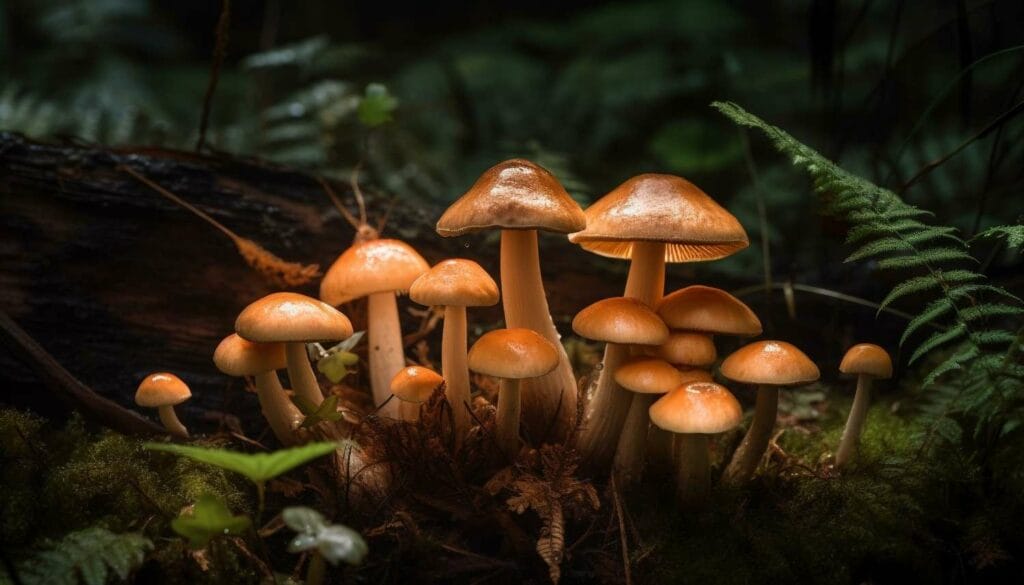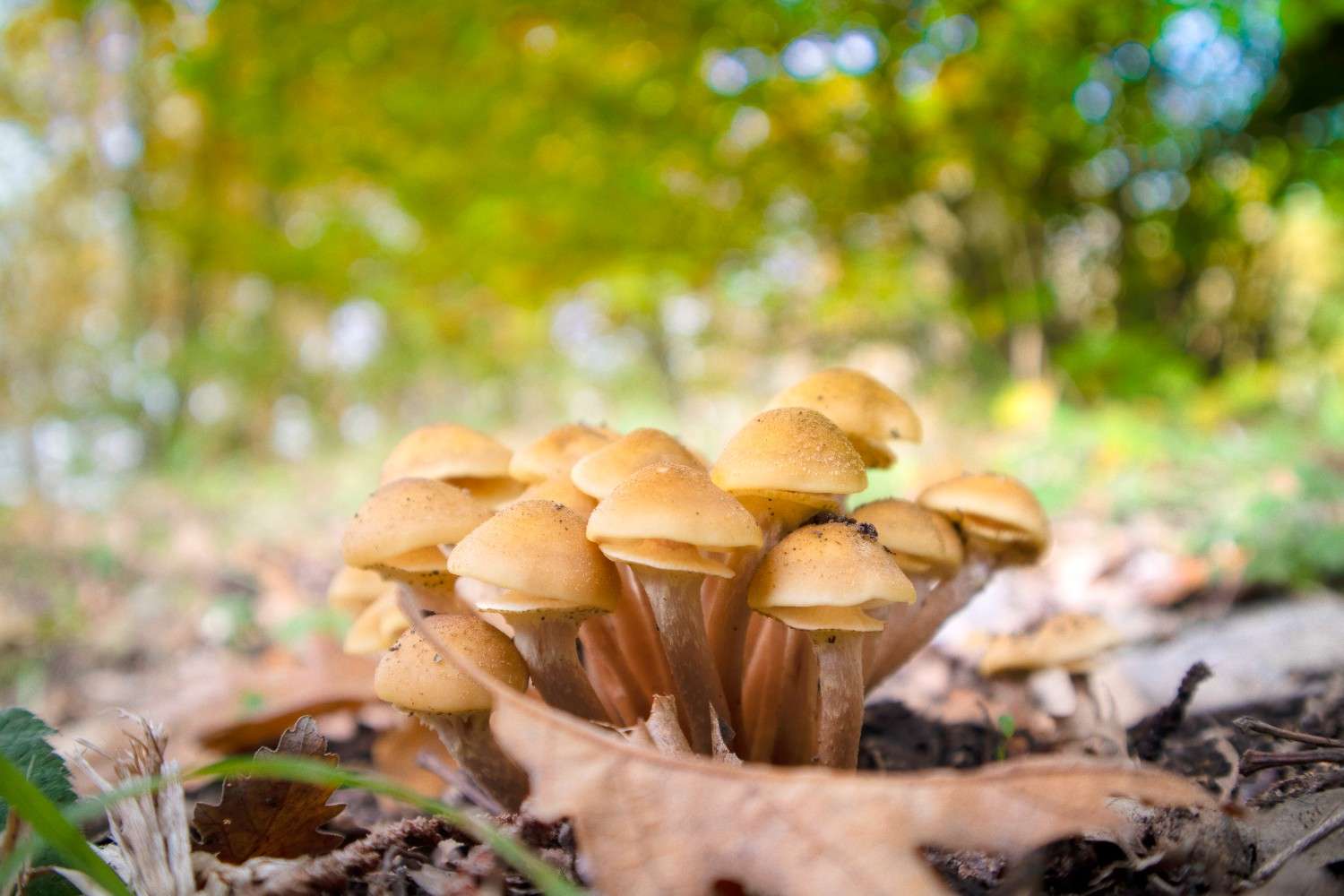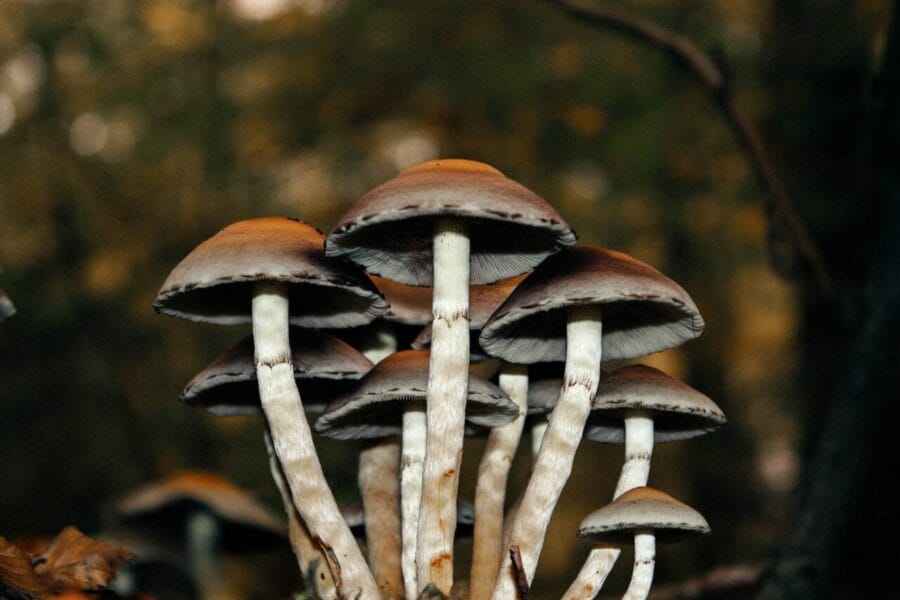Shrooms Canada has garnered widespread recognition, drawing significant investments for potential medical uses, spurring scientific research, and promoting increasing public acceptance.
Two recent studies highlight the prevailing use of psilocybin mushrooms as a popular psychoactive substance.
Eric Leas, an epidemiologist at the University of California, San Diego, noted a 1,250% increase in internet searches related to microdosing since 2015, with psilocybin overtaking LSD in 2019. Moreover, a report by the RAND Corporation indicates that about 3% of Americans – approximately 8 million adults – consumed psilocybin in the preceding year, making it the most commonly used hallucinogen in 2023.
Let’s explore the global captivation with shrooms.
[toc]
What Does Microdosing Involve?
Psychedelic microdosing involves consuming a minimal amount of a hallucinogenic substance to achieve a positive mental effect without embarking on a full psychedelic journey. This usually means taking only 10-20% of a dose that would cause a psychoactive response. The goal is to ingest an insignificant quantity of a psychedelic substance that doesn’t profoundly alter consciousness.
In history, microdoses of magic mushrooms and peyote were used to relieve physical symptoms and enhance well-being. During the 1960s, the practice of microdosing expanded to include LSD as people aimed to boost cognitive performance and creativity.
Currently, microdosing also includes substances like MDMA, Ritalin, cannabis, and ketamine, which can cause hallucinations at higher doses but don’t initiate a psychedelic experience when microdosed.
Comparing Microdosing and Full Dose Experiences
| Aspect | Microdosing | Full Dose (Psychedelic) |
| Dosage | 0.1 to 0.3 grams of dried mushrooms | 1 to 3 grams or more of dried mushrooms |
| Frequency | Regular (e.g., every few days) | Occasional |
| Effect Duration | Minimal interference with routine tasks | Altered consciousness persists for 4-6 hours |
| Sensory Impact | Induces hallucinations (altered or non-real sensory perceptions), magnifies emotions and sensory experiences (enhanced colors, amplified sounds), and may cause synesthesia (like “seeing” sounds or “hearing” colors) | Minor alterations in senses, slight mood and perception improvements, and heightened focus and creativity |
| Physical Impact | Little to no physical effects | Increased energy and heart rate, and possible feelings of nausea |
Rise of Psilocybin Microdosing
Approximately half of those who used psilocybin in the past year chose microdosing, a trend that’s prevalent among tech industry workers and suburban mothers. Microdosing means taking 1/10 to 1/20 of a usual dose. The majority of microdosers consume psilocybin only once or twice a year, with a slight 11% using it more than six times. More than half prefer whole or dried mushrooms, while others resort to processed forms like chocolate bars or teas.
The growing interest in microdosing is connected to changing laws regarding cannabis and psychedelics. States like Oregon and Colorado, where plant-based psychedelics are decriminalized, show the greatest microdosing interest.
Studies suggest an increase in psilocybin consumption, especially in party scenes, where it competes with drugs like ecstasy and ketamine. One research estimated that 5.5 million adults used hallucinogens in 2019, with a significant uptick in LSD consumption.
Key Drivers of the Growing Microdosing Trend
The RAND survey pinpointed the top three reasons why Canadians consume psilocybin:
Enjoyment and Social Engagement
Many Canadians take these hallucinogenic mushrooms for recreation, seeking a unique communal experience. The social aspect of using psilocybin in group events or social occasions adds to its appeal.
Mental Health
A significant portion of users turn to psilocybin for its potential mental health advantages. Indeed, a study in Nature-Scientific Reports Trusted Source indicates that microdosing psilocybin mushrooms
Teas represent a traditional and soothing approach to consuming psilocybin, which can help to enhance mental health conditions. Studies have shown that individuals who microdosed experienced a reduction in symptoms related to depression, anxiety, and stress, as opposed to those who did not.
Psilocybin Extracts
Psilocybin extracts provide a concentrated form of the compound, ensuring a more uniform and precise dosage.
- Method of preparation: Psilocybin is extracted from the mushrooms using solvents like alcohol.
- Dosage: Extracts are measured in milligrams, with doses ranging from 1 to 10 milligrams per microdose.
- Method of intake: They can be taken directly, mixed with beverages, or encapsulated.
Psilocybin Edibles
Edibles offer an innovative method for microdosing by incorporating psilocybin into food items such as chocolates, gummies, or other treats.
- Method of preparation: Psilocybin is infused into edible items during the cooking or manufacturing process.
- Dosage: Each edible contains a specific amount of psilocybin, ensuring consistent dosing.
- Method of intake: It is consumed like any other food product, often with a pleasant taste to mask the flavor of the mushroom.
Psilocybin Tinctures
Tinctures are liquid extracts that offer flexible dosing options and are easily absorbed by the body.
- Method of preparation: Psilocybin is extracted into a base of alcohol or glycerin.
- Dosage: They are measured in drops or milliliters, offering precise control over the amount consumed.
- Method of intake: They can be placed under the tongue or added to a drink.
Psilocybin Teas
Teas are a traditional mode of psilocybin intake, providing a soothing and tranquil experience.
- Preparation Method: Dried mushrooms steeped in hot water, often with additional herbs or flavors for taste enhancement.
- Dosage: The strength of the tea is dictated by the amount of mushrooms used, with typical Microdoses ranging from 0.1 to 0.3 grams.
- Consumption Method: Can be consumed like any other herbal tea.
Available Products at Shrooms Canada
| Product | Type | Dosage | Onset Time | Duration | Effects |
| Trans Envy Magic Mushrooms | Psilocybin Mushrooms | Usually, 0.1 to 0.3 grams per microdose. | 30-60 minutes | 2-4 hours | Improves mood, triggers visual alterations, encourages introspection |
| Kind Stranger – Microdose Capsules | Psilocybin Capsules | 1 capsule is equivalent to 250 mg (15 capsules in a bottle). | 30-60 minutes | 2-4 hours | Fosters clarity, creativity, focus, and aids in stress management |
Main Points to Remember
The global trend of microdosing psilocybin mushrooms, with Canada leading the way, indicates a major paradigm shift in the understanding and use of psychoactive substances. As research advances and regulatory systems evolve, the potential therapeutic benefits of psilocybin may radically alter the treatment of various mental health conditions and enhance overall well-being.
Frequently Asked Questions
What are the Essential Tips for Microdosing?
- Use an accurate scale if you do not have a pre-measured dose.
- Start the first dose on a typical, peaceful day when you’re in good health.
- Ensure your environment is secure and devoid of distractions.
- Stick to your selected protocol for a duration of 4-10 weeks.
- Start with a small dosage, making necessary modifications to reach the desired effects.
- Administer microdoses in the early hours to avoid interfering with sleep patterns.
- Initially, refrain from alcohol and other substances that alter consciousness. CBD might be beneficial.
- Keep a record of microdosing activities, noting dosage, timing, diet, activities, and outcomes in a journal.
- Be patient and allow the procedure to unfold and take effect gradually.
Interpreting the Fadiman Protocol
The Fadiman Protocol, a microdosing strategy conceptualized by psychologist James Fadiman, advises taking a microdose on day one and then refraining for the next two days. This pattern repeats for a span of 4 to 10 weeks.
The primary aim of this protocol is to promote a balanced approach to microdosing. It assists in averting tolerance accumulation and provides the body with recovery time between doses. This balance allows users to consistently experience the advantages of microdosing without a reduction in efficacy over time.
Decoding the Stamets Stack Protocol
Proposed by mycologist Paul Stamets, the Stamets Stack Protocol recommends dosing for four straight days, followed by a three-day hiatus. This protocol is distinguished by the addition of supplements like Lion’s Mane mushroom and Niacin.
Lion’s Mane is appreciated for its potential to stimulate neurogenesis, while Niacin is incorporated to enhance absorption. Like the Fadiman Protocol, this regimen continues for a period of 4 to 10 weeks. The combination of substances in the Stamets Stack is designed to boost cognitive function and foster overall brain health.
Articles you might find intriguing:




